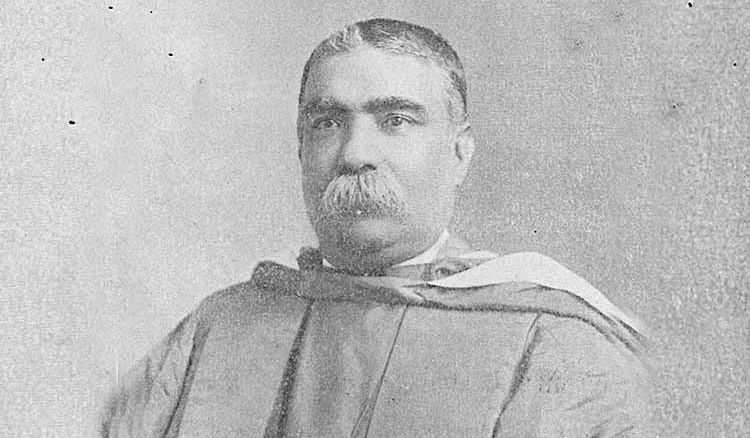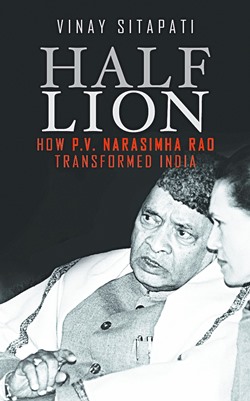“Freedom first, Freedom second, and Freedom always”
That was his motto.
True story :
One Englishman and a Bengalee gentleman were once travelling by the same train .
The Englishman was very proud of himself as he was an Englishman . He looked down upon the Bengalee gentleman,
That was his motto.
True story :
One Englishman and a Bengalee gentleman were once travelling by the same train .
The Englishman was very proud of himself as he was an Englishman . He looked down upon the Bengalee gentleman,

who however, took no notice off it, and went to sleep in peace . As soon as the Bengalee gentleman was asleep, the Englishman picked up the gentleman's shoes, and threw them outside the window . Then he too fell asleep.
After a while the Bengalee gentleman woke up, he searched
After a while the Bengalee gentleman woke up, he searched
his shoes, but could not find the shoes . He understood all . Then he took the Englishman's long coat on the wall and threw it outside the window and went to sleep again . When the englishman woke up , he is searching the coat and told 'Where is my coat gone?' Then 'Your coat
has gone to fetch my shoes, said the gentleman loudly.
Banglar Bagh or Tiger of Bengal is what Sir Ashutosh Mukherjee was popularly called in Bengali circles. The nickname fits well with the Walrus Moustache he sported.
He was the 1st student to be awarded a dual degree
Banglar Bagh or Tiger of Bengal is what Sir Ashutosh Mukherjee was popularly called in Bengali circles. The nickname fits well with the Walrus Moustache he sported.
He was the 1st student to be awarded a dual degree
(MA in Mathematics and MSc in Physics) from Calcutta University.
“Ashutosh had courage to dream because he had the power to fight and the confidence to win - his will itself was that path to the goal" - Rabindranath Tagore.
From Swami Vivekananda to Ishwara Chandra Vidyasgar,
“Ashutosh had courage to dream because he had the power to fight and the confidence to win - his will itself was that path to the goal" - Rabindranath Tagore.
From Swami Vivekananda to Ishwara Chandra Vidyasgar,
from D B Bhandarkar to SC Bose & from Ramanujan and Radhakrishnan to C.V. Raman, the people who helped shape modern India interacted with Mukherjee at some point in their illustrious careers.
Born on June 29, 1864 at Bowbazar, Calcutta, Ashutosh got a scholarship to study at the
Born on June 29, 1864 at Bowbazar, Calcutta, Ashutosh got a scholarship to study at the
Calcutta University.
In 1883, SN Bannerjee was arrested for contempt of court relating to an article he wrote criticizing a Calcutta HC order. This sparked off protests & group of students led by Ashutosh decided to protest. Perhaps this steeled his resolve to explore the world
In 1883, SN Bannerjee was arrested for contempt of court relating to an article he wrote criticizing a Calcutta HC order. This sparked off protests & group of students led by Ashutosh decided to protest. Perhaps this steeled his resolve to explore the world
of law. He proceeded to study law & won the ‘Tagore Gold Medal’ for 3 successive years - 1884, 1885 and 1886. In 1888, he received his degree and enrolled as a ‘vakil’ of the Calcutta HC. He joined the chambers of Rash Behari Ghosh, who has a doyen of the Bar of the time.
By 1888, Mukherjee was a lecturer in mathematics IACS.
Mukherjee continued publishing scholarly papers on mathematics & physics into his 30s.
In-between, Viceroy Curzon invited Sir Ashutosh to be a judge of the Calcutta HC. He said we would accept the assignment if his mother
Mukherjee continued publishing scholarly papers on mathematics & physics into his 30s.
In-between, Viceroy Curzon invited Sir Ashutosh to be a judge of the Calcutta HC. He said we would accept the assignment if his mother
permitted him to do so. With his mother’s green signal, he assumed judgeship in 1904 & remained a judge till 1923, even officiating as CJ of Bengal in 1920. As a judge, Sir Ashutosh had delivered about 20,000 judgments, many of which are still cited as examples.
Curzon wanted
Curzon wanted
Ashutosh to visit England so that Britons could experience first-hand scholars produced by the colonial education system. Ashutosh declined saying, that his mother’s religious beliefs would not permit her to allow her son to cross the seas. “Tell your mother that the Viceroy &
the Gov Gen of India commands her son to go,” thundered Curzon in his missive. “I will tell the Viceroy and the Governor General of India that Ashutosh refuses to be commanded by any other person except his mother, be he Viceroy or somebody higher still,” he firmly responded.
Dr Rajendra Prasad narrates in his autobiography. This Bihari lawyer had joined the chamber of Khan Bahadur, who was rumoured to be appointed in the Governor’s Executive Council. So clients were already on the lookout for other lawyers. In one such case, while the vakalat was in
Rajendra babu’s name & the poor chap had done all the research for his senior Bahadur, the clients engaged another senior to argue the case. The judge noticed the young lawyer helping the senior lawyer & asked him if he had any other precedents .2 days later, Prasad's friend
informed him that the VC of the Calcutta University was interested to know whether he would like to work as Professor of the law college. The surprised future President of India was informed that the VC was none other than Justice Ashutosh Mukherjee.
The multitasker Ashutosh
The multitasker Ashutosh
became the Vice Chancellor of Calcutta University, then a premier institute of learning in the country, from 1906 to 1914, and again from 1921 to 1923. He catapulted the University into becoming the foremost centre of learning in the whole subcontinent.
Ashutosh had a vision of the kind of education he wanted young people to have, and he had the acumen and courage to extract it from his colonial masters. He set up several new academic graduate programs at the Calcutta University.
For instance, Sir C.V. Raman was working in the
For instance, Sir C.V. Raman was working in the
govt’s Finance Department & they were understandably reluctant to give him away, Ashutosh managed & C.V. Raman joined as Prof of Physics, at a much lower salary than his govt job. Raman was given a free hand with no compulsion to take classes, but to augment fundamental research
Raman, however, loved teaching and conducted classes along with research projects.
Ashutosh played a key role in mentoring the future Sher-e-Bangla Fazlul Huq into joining the Calcutta HC Bar, where he practiced for decades.
Ashutosh played a key role in mentoring the future Sher-e-Bangla Fazlul Huq into joining the Calcutta HC Bar, where he practiced for decades.
had teamed up with Ashutosh's son Shyama Prasad
Apart from his fellowships & memberships in several international academic bodies, he was recognised by an award of the title of Saraswati in 1910 from pandits in Nabadwip, followed by that of Shastravachaspati in 1912 from the
Apart from his fellowships & memberships in several international academic bodies, he was recognised by an award of the title of Saraswati in 1910 from pandits in Nabadwip, followed by that of Shastravachaspati in 1912 from the
Dhaka Saraswat Samaj, Sambudhagama Chakravarty in 1914 and Bharat Martanda in 1920. Mukherjee was appointed a Companion of the Order of the Star of India (CSI) in June 1909, and knighted in December 1911.
Mukherjee married Jogamaya Devi Bhattacharyya (1871–16 July 1958) in 1885.
Mukherjee married Jogamaya Devi Bhattacharyya (1871–16 July 1958) in 1885.
The couple had seven children, Kamala (born 1895), Rama Prasad (1896-1983), Syama Prasad (1901-1953), Uma Prasad (1902-1997), Amala (born 1905), Bama Prasad (born 1906) and Ramala (born 1908). His son Syama Prasad Mookerjee, the most notable of his children, founded the
Bharatiya Jana Sangh, today’s BJP.
According to his grandson, Sivatosh Mukhopadhyay, Ashutosh Mukherjee’s career that oscillated between academia and law could be encapsulated into three ‘phases’. “The first phase of his career was as a votary of mathematics, the second phase
According to his grandson, Sivatosh Mukhopadhyay, Ashutosh Mukherjee’s career that oscillated between academia and law could be encapsulated into three ‘phases’. “The first phase of his career was as a votary of mathematics, the second phase
as a devotee of law, and the 3rd phase as a creator and builder of the University.”
After serving 5 terms as VC of Calcutta University, Mukherjee declined to be reappointed to a sixth term in 1923 when the university's Chancellor, Governor of Bengal the Earl of Lytton, tried to
After serving 5 terms as VC of Calcutta University, Mukherjee declined to be reappointed to a sixth term in 1923 when the university's Chancellor, Governor of Bengal the Earl of Lytton, tried to
impose conditions on his reappointment. Shortly thereafter, he also resigned his judgeship on the Calcutta High Court and resumed his private practice of law.
While arguing a case in Patna the following year, Mukherjee died suddenly on 25 May 1924, a month before his sixtieth birthday.
#ForgottenHeroes
#VANDEMATARAM
#ForgottenHeroes
#VANDEMATARAM
• • •
Missing some Tweet in this thread? You can try to
force a refresh









